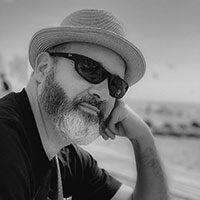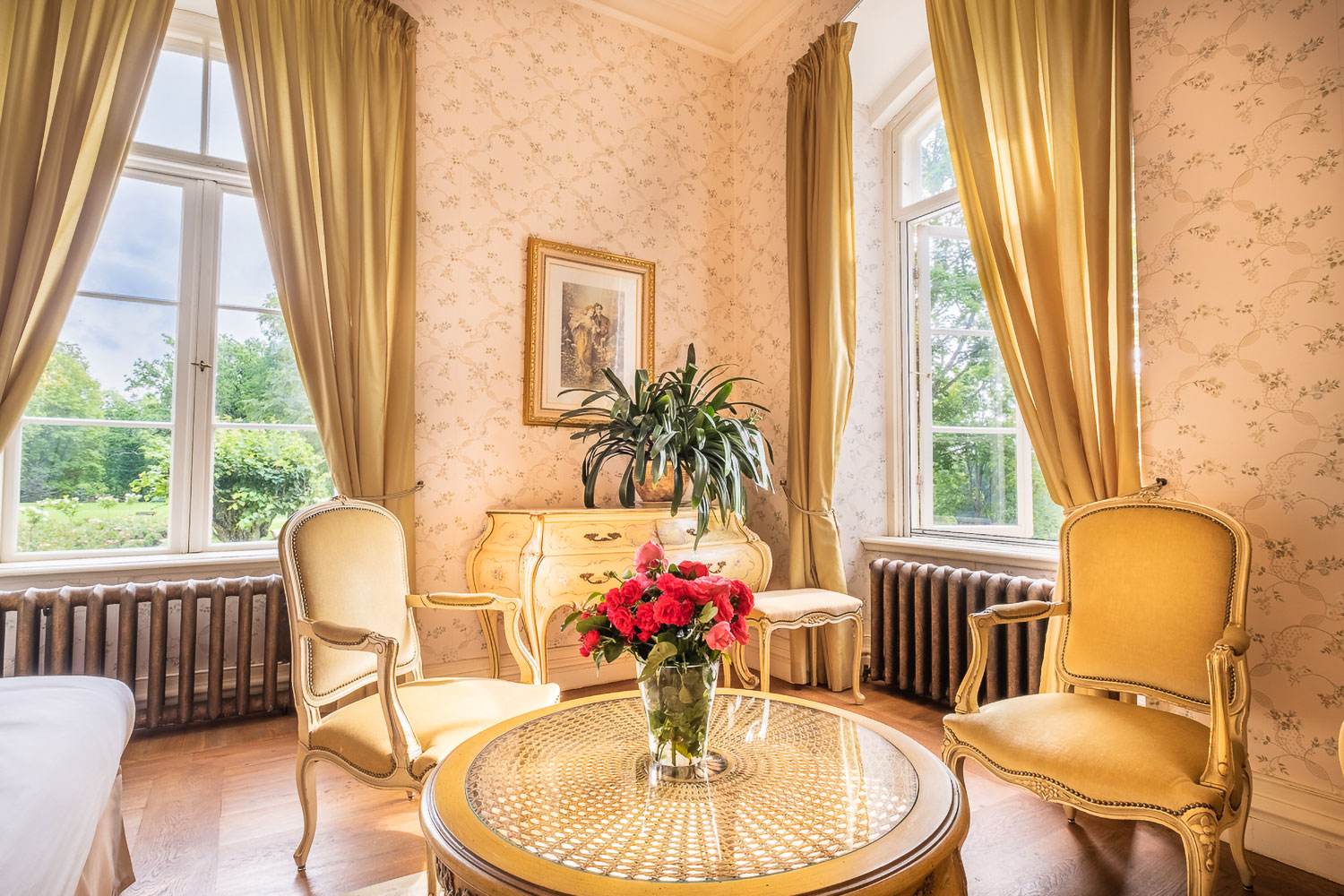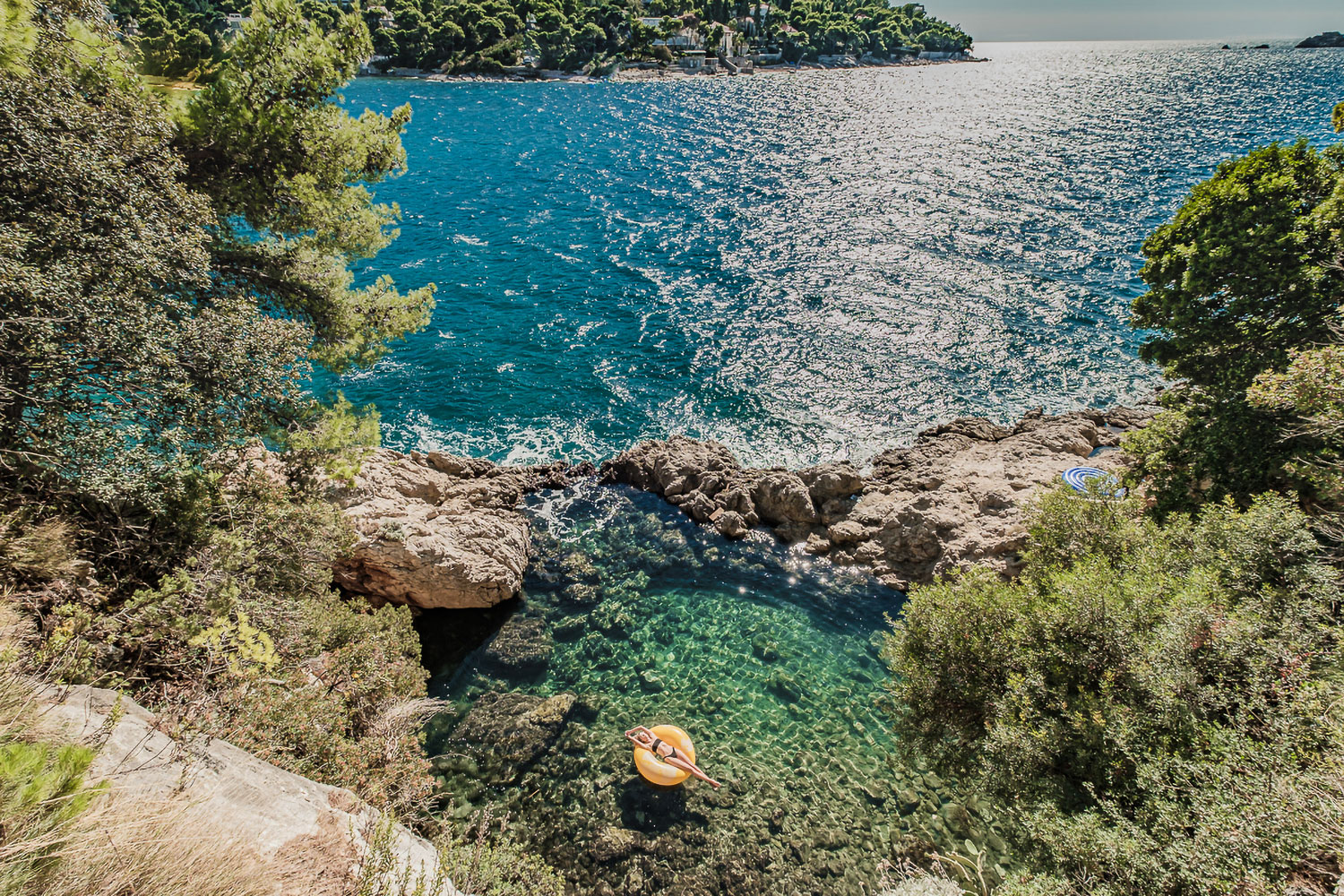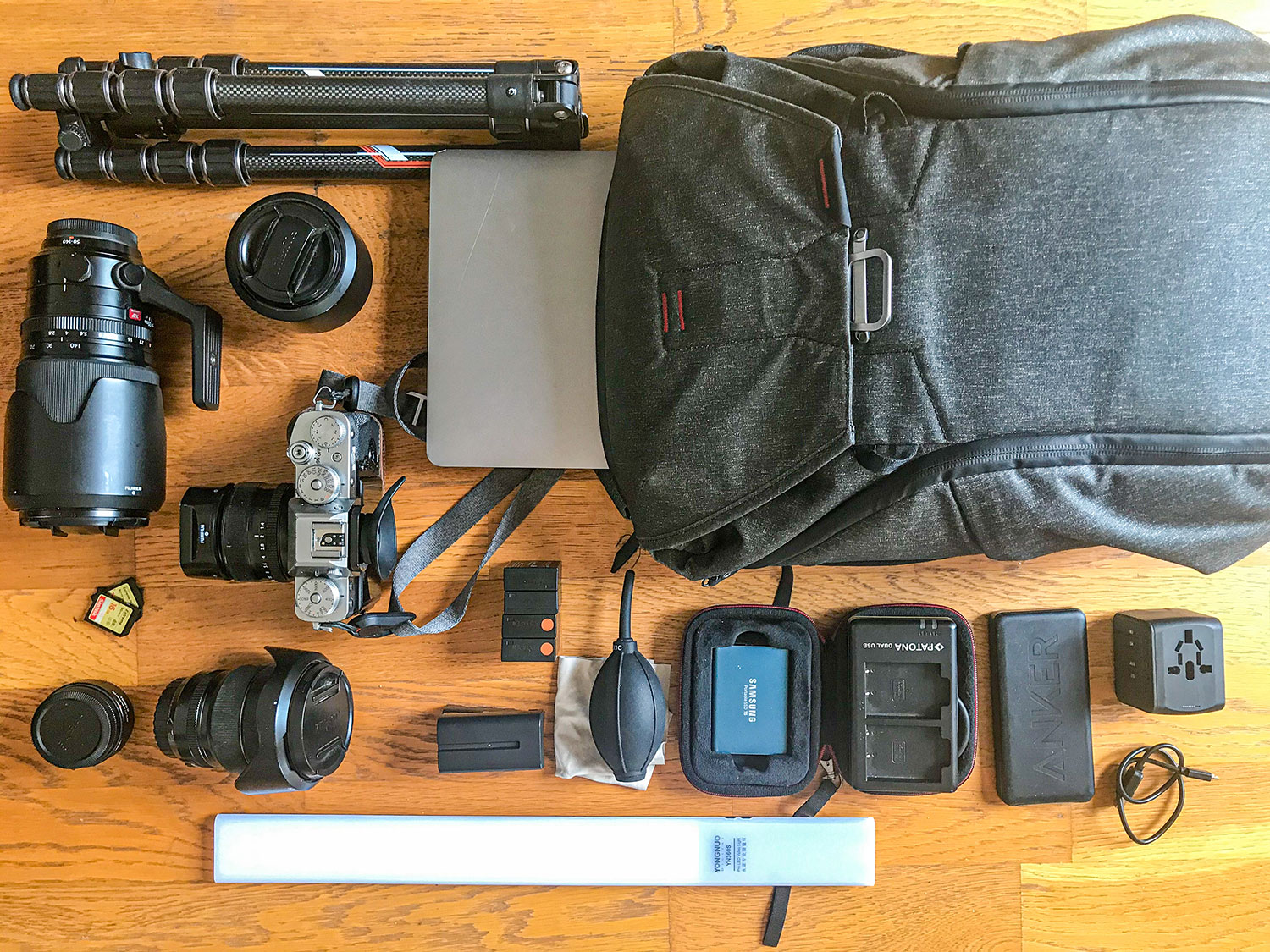A Nomad Photographer
Stephane Louesdon, professional photographer, interestingly has photography as his main hobby as well. Having specialized in Hotel photography, he travels for at least 6 months a year, allowing him from hotel to hotel to visit an immense variety of countries, especially in Europe and Asia. An interview not to be missed!
Hello Stéphane! Could you please introduce yourself?
My name is Stéphane Louesdon, I’m a French freelance self-taught photographer, I’m specialized in hotel photography and everything that is around it (buildings, crew, food, activities) and street fashion photography.
I live part-time in Paris, part-time in Morocco and part-time traveling (at least 6 months a year).
Do you have any hobbies? What do you like to do in your free time?
As photography is a work as much as a passion, photography is also my main hobby. Of course, traveling, discovering new cultures, food and activities are the reasons why I choose this life and can be considered as my hobby. I watch movies in my free time and listen to music almost all day.
When did you first get interested in Photography and why?
I have had several jobs, but I began with photography when I was 16 years old, and of course, it was film photography. I had a Minolta at this time. Then I dropped photography for years until my forty’s. Since then, I have practised almost every day, enjoying developing my eyes and sense of light and lines and capture the essence of an emotion or situation.
RIGHT: Fuji X-T3 . Fuji XF10-24mmF4 @10mm . f/10 . 1/250″ . ISO 160 – Hotel Sri Lanka
Why did you decide to become a professional photographer?
As I was enjoying music and concerts, and I began to shoot a lot of them, and getting paid for it. The idea of being a professional photographer began at this moment. I also discovered that I enjoy a lot architecture photography, and as I was living par-time in Morocco, I began to shoot hotels. My work was appreciated enough that I found plenty of work to begin a new chapter as a professional photographer.
And your interest in travelling? How did it all start, and how do you manage to reconcile work with travel?
I have always been interested in traveling and discovering the world. I was sailing on the Nile in Egypt for my 18th birthday. Art, culture, people, food, I always have been curious about others.
Developing my knowledge and technics about Hotel photography, I had the idea that I could combine two passions to make a living. I also think that I could propose my work for fashion street photography as I’m already traveling, and reduce the cost for brands to have pictures of their products in iconic places like Tokyo or Kathmandu.
I just bought one ticket plane, proposed my work, organized shooting (mainly via Instagram), and that’s it.
Which countries have you been to, and which has impressed you the most?
I can not name all the countries I have been to. Still, since June 2019, I have been to Madagascar, Morocco, Belgium, Japan, Sri Lanka, India, Nepal, Lithuania, Latvia, Estonia, Finland and Croatia.
I’m very in love with Japan in so many ways, I loved the people in Sri Lanka, and its nature is amazing. Lakes and forests in Finland are also amazing.
RIGHT: Fuji X-T3 . Fuji XF50-140mmF2.8 @56.30mm . f/7.1 . 1/200″ . ISO 600 – Landscape Finland
In addition to commercial photoshoots, is it possible to get other sources of income as a travel photographer?
I did renovate a house in the beautiful city of Essaouira, in Morocco. I rent it when I was traveling; it permits me to choose what I want to do or not during traveling. Of course, that was the case before the Covid crisis, and I hope it will be back soon.
As you might imagine, a lot of people would love to achieve this lifestyle. Could you please share some tips with younger photographers who would like to make a living as travellers?
It’s really not easy to make money while traveling as a photographer, as the rise of thousands of “influencers” killed a bit the market. But it’s still possible.
First, be a good photographer, practice a lot, never stop learning, find your style and what you like to photograph.
Build a decent portfolio working first around the place you live, use new technology and new social media resources.
Begin to travel for your own purpose and pleasure, and make pictures to grow your portfolio and then, try it. If you are well prepared, you should not be afraid and go for it.
As you are frequently travelling, we assume that a careful choice of a camera bag is essential for you. Which one do you currently use, and what are the reasons why you chose this particular model?
When you are traveling a lot, you have to change your state of mind in terms of gear, and focus on what is essential or not. You have to always work on a balance between making a professional shoot and traveling safe and light.
So reducing all your gear is the first step, reducing as much as possible but without reducing the quality of the images that you can make. In the end, reducing your gear will make you a better creative photographer. Of course, all camera brands will advertise that you need the maximum of gear to be efficient, that is of course not true, especially if you travel a lot.
As my current backpack, I use the Peak Design 20L Everyday Backpack. It is small, and nobody imagines how many things I have inside when I have it on my back walking around. I like it a lot, I have it for one year and a half, using it a lot and it doesn’t show signs of use at all.
It is simple and doesn’t look too much like a camera bag. That is good for security, and it also has small details that make it difficult to open. It has a lot of small ideas that make it very smart to use, a lot of attaching systems, pockets, and good options to store all my stuff. When I put the maximum load in it, I can have 8 kilos on my back, in 20L!!
The items you carry inside, including cameras, lenses and all the accessories needed
First my camera, it is a Fuji X-T3, and most of the time it is not in the backpack because I use the Capture clip from Peak Design to have it strapped on my bag. It’s so handy that I can’t go without it now, so less weight and so much practical.
In addition, I use the slide lite strap from Peak Design to secure my camera when I hold it. I also have a leather grip protection from MegaGear that gives a nice grip and an old fashion look to my camera.
Then I have reduced the number of lenses to only 4:
The Fuji 10-24mm – I use it mainly for Hotel photography, inside, outside, landscape and also sometimes for my street fashion photography.
The Fuji 35mm F1.4 – I use it for hotel details, food photography, portraits of the crew, and of course, during fashion shooting.
The Fuji 56mm – I use it for Food photography, portraits and Fashion shooting.
The Fuji 50-140mm – I use it for landscape, portraits and fashion shooting. I also have the XF1.4X TC WR teleconverter if I need to do some wildlife shooting.
I also used to bring the 18-55mm, “just in case”, but almost never used it, so I decided to leave it at home. Maybe I would just add the 14mm Samyang that I have for night shooting.
Then I have 5 batteries (2 original from Fuji, and 3 others) but I have to admit that even during a big shooting day I barely use 3 batteries. I use a light 2 slot batterie charger that comes with the Patona batteries I have.
I have an essential cleaning kit, a few soft microfiber tissues, one manual air blower, and one brush pen. I travel with a 13-inch MacBook pro.
I have a mini bag that I can have in my suitcase or in my backpack that contains a universal plug-in adapter, with which I can plug anything I need to charge: my phone, batteries and computer. It also contains all the cables I need for that purpose, also my computer charger and my hard drive.
I use only a 500GB SSD Samsung hard drive; it forces me to take fewer pictures, and it forces me also to delete anything I don’t need. Being more efficient is always the goal while traveling.
I have four 16GB Sandisk cards, and one 32GB. I use small cards (no 64/128 or 256) for different reasons. First, it gives me rhythm and knowledge about the amount of pictures I do during a shooting, it’s a frame to work. Second, if you lose one, or if one is defective, you only lose 16GB of data (I use the second slot as a Jpeg rescue in case).
Every few months I buy a new card to replace the oldest one and so on.
I travel with a very light and small carbon tripod from K&F, the TC2335. It’s a quite cheap one, but it’s doing the job well enough.
And to finish, I travel now with a handheld led light from Yongnuo, the YN360S, and I use it to add continuous light on food pictures or to make creative portraits.
RIGHT: Fuji X-T3 . Fuji XF35mmF1.4 . f/2.0 . 1/3200″ . ISO 160 – Food Croatia
Can you tell us about your previous DSLR camera system and the reasons why you switched to Fuji?
I used to work with a Canon 5D Mark IV with several red ring lenses. I was in a trip to Japan in September 2019, it was a professional and personal trip (for my 50th birthday), and I wanted to have a small, easy camera to wander in the streets of Tokyo, so I bought an X-T3 with the 18-55mm kit lens.
After a few days of practising, I witnessed how fun and easy it was to be in Japan just with the X-T3. So I went to a famous second-hand camera store, looked at the lenses, and I bought the 35mm F1.4.
I did my fashion shooting partly with the 5D and partly with the X-T3, and I really had fun with the Fuji system.
So after a few weeks, I went back to the store and asked them how much they would offer for all my Canon stuff, it was a really a good price, especially if you buy new stuff in their own store. So I sold everything, bought a lot of lenses from Fuji, and began a new photography life.
So, to resume, I will say the main reason I switched was the pleasure to make pictures, so much less to carry, less money to spend and for almost the same quality.
Based on your experience so far, what are the advantages and disadvantages of the Fuji X system for the type of work you do?
First, if it is about traveling, the Fuji X system is really nice, so light and efficient, with weather resistance, strong building, just perfect for travelers.
In terms of portrait photography, the lenses are very good. The 35mm F1.4, 56mm F1.2 and 50-140mm F2.8 make any situation easy with my Fuji. For hotels pictures and surrounding, the 10-24mm is just great and so versatile that I’m never complaining.
The live view system is really a plus for my work, and I love the focus peaking for portraits and fashion. The camera is very intuitive, and when you have the pleasure to use the system, like the aperture ring, for example, then for sure you do better pictures.
Of course, if I would specialize in wildlife animal shooting, or speed sports, or low light concerts, maybe I would be a bit frustrated, but it’s not my work so…
I would be happy with a better AF and a better ISO, but really I’m happy like that. There is no perfect camera, you just need to find the one that suits most of your needs.
What’s your favourite lens, and why?
I will hesitate between the 10-24mm and the 35mm F1.4. But I will say the 35mm is my favorite one. It is so small and so versatile that I use it everywhere.
I make portraits, food details, street pictures, it’s my best travel companion for sure.
When you are in the street, it’s so small on the X-T3 that no one is noticing you, or being “scared” of your camera when you shoot portraits or daily life in the street.
It also makes very nice smooth details in food photography or atmosphere picture in hotels rooms. I make nice crew portraits or action kitchen shoots with it also.
I use it for fashion shooting a lot also, as it has this nice precision and smoothness at the same time.
RIGHT: Fuji X-T3 . Fuji XF56mmF1.2 . f/1.4 . 1/2500″ . ISO 160 – Fashion Nepal
Raw, Jpeg or both? Why?
I use only Raw files even if I use the Fuji film simulations because I like them (I just use the preset in Lightroom). When you have professional pictures to do, you want to have the dynamic range of the raw to recover images that have been made in difficult surroundings.
Almost all my hotel’s pictures are made with the HDR process of bracketing 3 or 5 Raw images. Raw is really a tool and a security for professional purpose.
What device do you use to process your images and for your daily work?
I use a 13-inch Macbook Pro. It’s lightweight and has a good speed even if sometimes I feel that Lightroom is a bit slow or makes the system very hot too quickly. I have also an old iPhone 7 that is good enough for what I do with it.
So, we understand you use Adobe Lightroom. What are the basic steps you do on your post-processing workflow for a commercial photoshoot?
I use Lightroom since forever, and even if a lot of people complain about how Lightroom is processing the Fuji Raw files, I’ll continue to use it.
As I shoot thousands and thousands of pictures every year, I’m very happy how Lightroom works as a database and catalogue, the way metadata are sorting pictures and how you can batch edit everything in groups that make everything so much easier.
I’m not at all an obsessed pixel peep and I know that mainly my pictures will be seen on a phone and maybe on a good computer, so this pixel war means nothing to me. When I do a shooting, first I import the pictures to my SSD hard drive with the correct metadata and labels so it will be easy to find everything.
Then I do a first quick selection of the pictures, a large one. Then I apply an editing on this selection, I choose (mainly from my own presets in lightroom) the edit I found correct for the subject and then I apply it to the whole selection.
Then I make a second selection, a shorter one, with this new editing.
Normally I’ll wait a few hours, or a day, to make the final selection. Then I will edit this final selection more precisely. I export the selection to my computer in Jpegs and send them with WeTransfer to the client. I work very quickly and when I leave the hotel they have the pictures the next day.

Former theatre artist, comedian, circus performer and contemporary dancer, Stephane Louesdon has been a photographer for the past 10 years, a pure self-taught artist enriched by his past experiences.
After having shown his art in France (Paris, Arles) and Morocco, and published a book, he, now shares his time between France, Morocco and travelling the world.
He is specialized in hotel and food photography, and he also developed a street fashion nomad photography style.































Vojkan Milenkovikj
July 10, 2021 @ 1:18 pm
Excellent interview. Really inspiring and informative. It just proves that is never to late to enter the game and that quality always comes on top. Thanks for sharing.
alex
July 14, 2021 @ 6:30 am
I find this interview is very helpful and informative . Thanks for sharing!